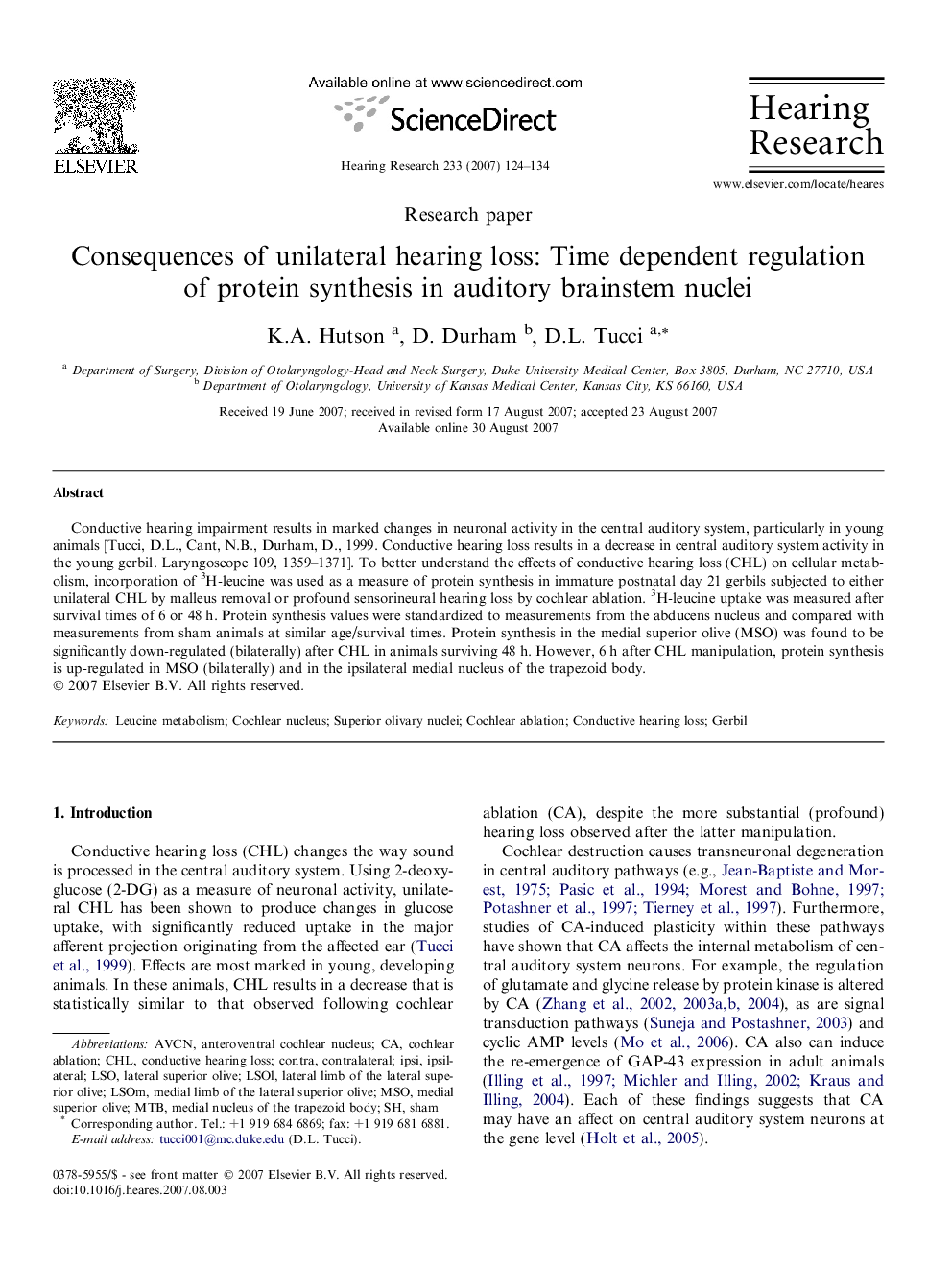| Article ID | Journal | Published Year | Pages | File Type |
|---|---|---|---|---|
| 4356176 | Hearing Research | 2007 | 11 Pages |
Abstract
Conductive hearing impairment results in marked changes in neuronal activity in the central auditory system, particularly in young animals [Tucci, D.L., Cant, N.B., Durham, D., 1999. Conductive hearing loss results in a decrease in central auditory system activity in the young gerbil. Laryngoscope 109, 1359-1371]. To better understand the effects of conductive hearing loss (CHL) on cellular metabolism, incorporation of 3H-leucine was used as a measure of protein synthesis in immature postnatal day 21 gerbils subjected to either unilateral CHL by malleus removal or profound sensorineural hearing loss by cochlear ablation. 3H-leucine uptake was measured after survival times of 6 or 48Â h. Protein synthesis values were standardized to measurements from the abducens nucleus and compared with measurements from sham animals at similar age/survival times. Protein synthesis in the medial superior olive (MSO) was found to be significantly down-regulated (bilaterally) after CHL in animals surviving 48Â h. However, 6Â h after CHL manipulation, protein synthesis is up-regulated in MSO (bilaterally) and in the ipsilateral medial nucleus of the trapezoid body.
Keywords
Related Topics
Life Sciences
Neuroscience
Sensory Systems
Authors
K.A. Hutson, D. Durham, D.L. Tucci,
